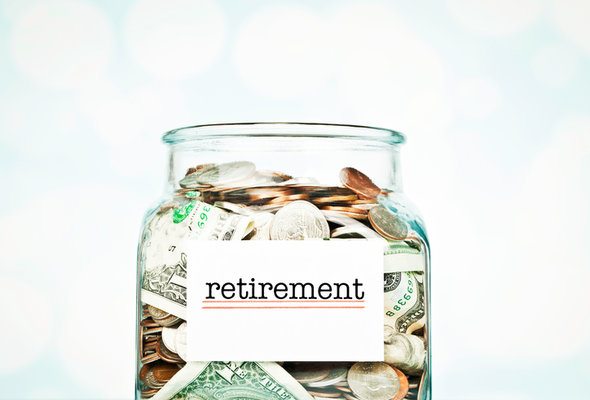A 403(b) is a tax-advantaged retirement plan available to many of America’s public employees, employees of universities and hospitals, religious leaders and workers at non-governmental organizations. Like a 401(k), a 403(b) comprises contributions that aren’t taxed right away. The contributions grow in a tax-deferred plan, with taxes paid upon withdrawal. Understanding the nuances of a 403(b) plan, including contribution limits, investment options and withdrawal rules, is essential for anyone eligible to participate.
Consider working with a financial advisor as you select and manage tax-advantaged plans.
What Is a 403(b) Plan?
A 403(b) is also known as a tax-sheltered annuity (TSA). It’s like a 401(k), but for public and non-profit institutions rather than private companies. For some employees, participation in a 403(b) is mandatory, while for others it’s optional.
One of the key benefits of a 403(b) plan is its tax-deferred growth. This means that any investment earnings within the plan are not subject to taxes until the funds are withdrawn, usually during retirement when the individual may be in a lower tax bracket. Employees can contribute up to a certain limit each year, which is set by the IRS and may change annually. Additionally, those aged 50 and over can make catch-up contributions, allowing them to save more as they approach retirement.
Contributions to a 403(b) plan are usually taken from your wages before taxes. The money that goes into your account won’t ever hit your bank account (meaning you won’t be tempted to spend it). This is known as an “elective salary deferral.” The upside to these pre-tax contributions is that they lower your taxable income, which means you’re paying less in taxes at the same time you’re saving for retirement. You will, however, have to pay taxes once you start withdrawing your funds.
How Does a 403(b) Plan Work?

Those who enroll and make voluntary contributions can choose to invest their contributions in either annuities or mutual funds. Mutual funds are “baskets” of securities, potentially including stocks, bonds and money market holdings, and charge fees (and sometimes commissions) to investors.
Annuities come in a few different flavors: fixed, equity-indexed and variable. The name of the annuity tells you how the interest rate works. Your money will grow according to either a fixed interest rate, an equity-indexed rate tied to the overall stock market, or, in the case of a variable annuity, to the performance of individual investments.
If you participate in a 403(b), make sure to opt for a low-fee plan. Fees can eat into your retirement savings, to the tune of tens of thousands of dollars. IRS rules for 2025 dictate that elective deferrals for an employee under age 50 can’t top $23,500. Over 50? You can make extra catch-up contributions of up to $7,500 this year.
Employers may also make contributions to your 403(b) account. These are known as “nonelective employer contributions.” If you contribute to a 403(b) via elective deferrals and you get employer contributions, the total can’t exceed the lesser of either $70,000 or 100% of the previous year’s wages and benefits in 2025.
403(b) Withdrawal Rules
Withdrawals from your 403(b) account will be taxed as regular income at the federal level. Some states treat it as regular income, while in some states, all or part of it is exempt and some states don’t tax income at all. 403(b) accounts come with rules restricting when you can withdraw funds. This means that they’re not a good place to stash your emergency fund or, for that matter, any money that you think you’ll need before retirement. With certain exceptions, taking distributions from your 403(b) before you hit age 59 1/2 will cost you a 10% penalty. What are those exceptions?
- If you separate from your employer, you can roll over the funds in your 403(b).
- If you die, your beneficiary can access your contributions.
- If you encounter financial hardship, you may be able to make a withdrawal (in this case, you may only access elective deferrals taken from your pay, not contributions made by your employer).
- If you are in the reserves and get called up, you may be eligible for what’s called a qualified reservist distribution.
- If you become disabled, you can make a withdrawal.
403(b) Contribution Limits
When planning for retirement, understanding the contribution limits of your 403(b) plan is crucial. A 403(b) plan is a tax-advantaged retirement savings account designed for employees of public schools, certain non-profits, and some religious organizations. Each year, the IRS sets limits on how much you can contribute to your 403(b) account, and staying informed about these limits can help you maximize your retirement savings. For 2025, IRS contribution limits on 403(b) contributions are as follows:
- For an employee’s elective salary deferrals, the limit is $23,500.
- For total contributions, including salary deferrals and employer matching, the limit is the lesser of either $70,000 or 100% of employee compensation.
- Employees age 50 or over can make catch-up contributions of up to $7,500 on top of the regular limit.
Understanding The Roth 403(b)

A Roth 403(b) has similar attributes to the Roth IRA. You fund it with after-tax dollars, which means you don’t lower your taxable income, but the upside is that you don’t pay taxes on the money that you withdraw in retirement. Not everyone who has the option to contribute to a 403(b) has the option to choose a Roth 403(b). If you do have the choice between a regular and a Roth 403(b), how do you choose?
As with the IRA vs. Roth IRA debate, it’s a question of your tax bracket. If you think your tax bracket is higher now than it will be in retirement, it pays to save for retirement with pre-tax dollars. That means taking advantage of a regular 403(b). By doing so, you’re reducing your taxable income, which means you may owe less to Uncle Sam this year.
If, on the other hand, you think your income and tax bracket will be higher in retirement, you should probably go for a Roth 403(b). You’ll reduce the tax burden you’ll face in your post-work years. You also won’t pay taxes on the (possibly substantial) growth of your investments.
Roth 403(b) vs. Roth IRA
What about the choice between funding a Roth 403(b) and a Roth IRA? If they both use after-tax contributions, what’s the difference? Well, Roth 403(b)s have higher contribution limits than Roth IRAs ($23,500 vs. $7,500), so if you’re a savvy saver, you may be better off with a Roth 403(b). Plus, people with high incomes aren’t eligible to contribute to Roth IRAs.
On the other hand, if you decide to open a Roth IRA instead of a 403(b), you won’t be limited to the investments available through your employer. You may find a Roth IRA option on the open market that has lower fees than any of the Roth 403(b)s you have to choose from. In that case, you may want to go with the Roth IRA if it meets your savings needs.
Bottom Line
One of the key benefits of a 403(b) is the potential for tax-deferred growth, meaning that taxes on contributions and earnings are postponed until withdrawals are made, typically during retirement when individuals may be in a lower tax bracket. Moreover, many employers offer matching contributions, which can significantly enhance the growth of the retirement fund. Participants must understand the specific rules and limitations of their 403(b) plan, such as contribution limits and withdrawal penalties, to maximize their benefits.
Tips for Getting Retirement Ready
- Working with a financial advisor can be a huge help in determining your retirement needs and investing your savings to get you there. Finding a financial advisor doesn’t have to be hard. SmartAsset’s free tool matches you with vetted financial advisors who serve your area, and you can have a free introductory call with your advisor matches to decide which one you feel is right for you. If you’re ready to find an advisor who can help you achieve your financial goals, get started now.
- Figure out how much you’ll need to save to retire comfortably using our retirement calculator. An easy way to get ahead on saving for retirement is by taking advantage of employer 401(k) matching.
Photo credit: ©iStock.com/CatLane, ©iStock.com/Mlenny, ©iStock.com/AndreyPopov
